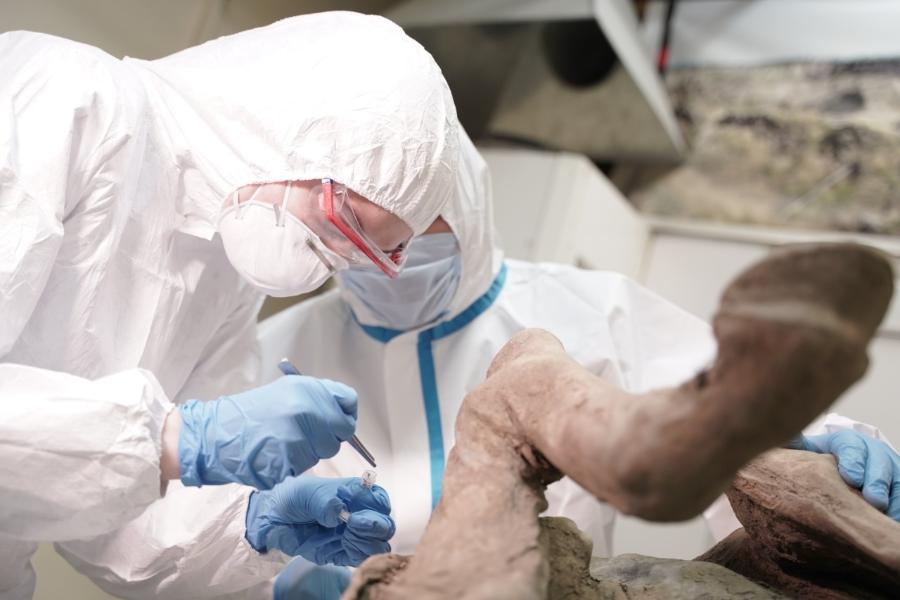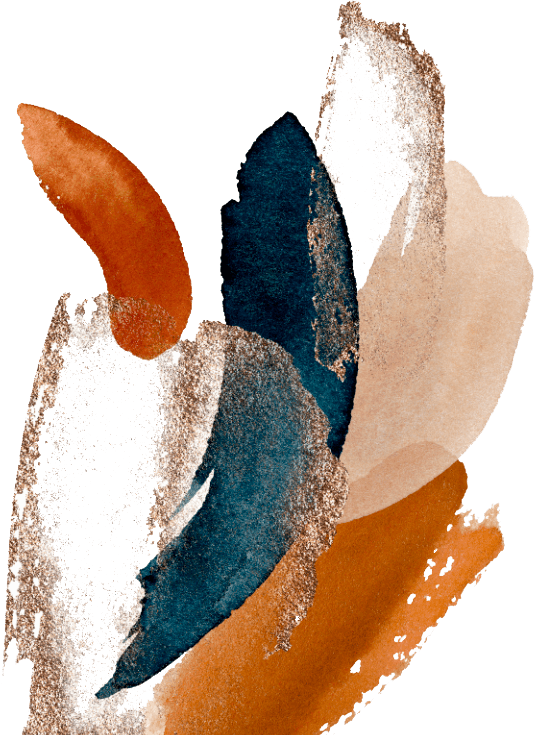
photo: Nina SLEPTSOVA / NEFU Newsroom
- 19 February 2021
- 1142
NEFU and Vector Research Center are searching for paleoviruses
Studying the soft tissues of ancient discoveries from the Mammoth Museum of North-Eastern Federal University will allow researchers to assess the diversity of microorganisms, whose DNA and RNA could be preserved in the remains. The pilot experiment began within the framework of a cooperation agreement between the Research Center of Virology and Biotechnology Vector and NEFU.
The team of Vector State Research Center is keen to find paleoviruses that would allow to start development of paleovirology in Russia and conduct leading research in virus evolution. Vector Research Center conducts significant amount of monitoring of various infections, and gathers a lot of material for epidemiological research in Russia and elsewhere in the world. There were a number of attempts to start this work during the last decade. Now we are moving from planning to actions”, said Vector researcher from the Department of Biophysics and Ecological Studies, Olesya Okhlopkova.
A hole is created in the remains, from which soft tissue samples are taken. Then they are placed in a test tube for further transportation, followed by standard molecular biological methods - the isolation of total nucleic acids, whole genome sequencing, to allow the scientists get information on biodiversity of microorganisms in the samples. “If nucleic acids were not destroyed, we will be able to obtain data on their composition and establish how it changed, what was the evolutionary development of events. We will be able to determine the epidemiological potential of currently existing infectious agents,” said Olesya Okhlopkova.
The first discovery for the selection of soft tissues was the Verkhoyansk horse, found in 2009 in the Verkhoyansk region. Geological age – 4,450 years. The scientific value of the discovery lies in the fact that the complete nuclear genome was deciphered, thanks to which the history of the origin of the modern Yakut horse became known. “Also, within the framework of the project, other animals of the mammoth fauna will be studied - the Omoloy elk, Malolyakhovsky mammoth, Tumat dogs, ancient partridge, various rodents, hares and other prehistoric animals. These are discoveries that were found over the past ten years, only bacteriological tests were made on them. We are conducting research on paleoviruses for the first time,” said Maksim Cheprasov, head of the Mammoth Museum laboratory at NEFU.
Sergey Fedorov, head of the Museum Exhibition Department, added that the discoveries are stored in a special refrigerator-container at a temperature of -16C, -18C. In total, there are more than 20 types of ancient finds. “The Mammoth Museum has long-standing ties with Vector Research Center. Back in the early 2000s, specialists from the Vector came here and worked on samples together. Technologies do not stand still, and with the help of new research methods, we hope that paleoviruses will be found at our facilities and interesting discoveries in the world of viruses await us,” he concluded.
Reference:
Research Center of Virology and Biotechnology VECTOR is one of the largest research virological and biotechnological centers in Russia. Organized in 1974. Today, the fundamental research work of the center is focused on obtaining new scientific knowledge in the field of epidemiology, molecular biology, virology, bacteriology, genetic engineering, biotechnology, ecology and biological safety.
Photos from the event can be viewed here.


 English
English Russian
Russian Chinese
Chinese